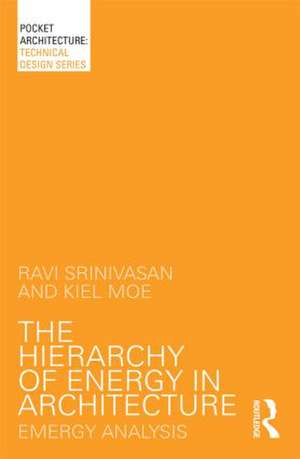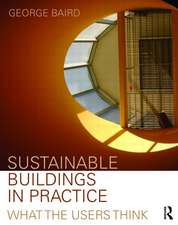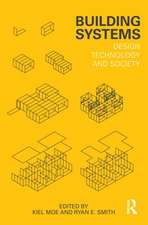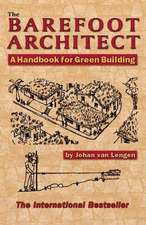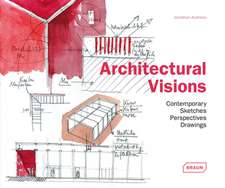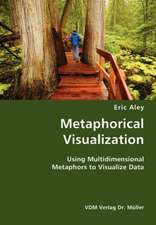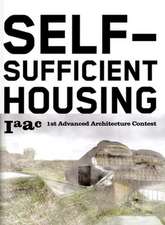The Hierarchy of Energy in Architecture: Emergy Analysis: PocketArchitecture
Autor Ravi Srinivasan, Kiel Moeen Limba Engleză Paperback – 12 iun 2015
The Hierarchy of Energy in Architecture addresses this situation by providing a clear overview of what energy is and what architects can do with it. Building on the emergy method pioneered by systems ecologist Howard T. Odum, the authors situate the energy practices of architecture within the hierarchies of energy and the thermodynamics of the large, non-equilibrium, non-linear energy systems that drive buildings, cities, the planet and universe.
Part of the PocketArchitecture series, the book is divided into a fundamentals section, which introduces key topics and the emergy methodology, and an applications section, which features case studies applying emergy to various architectural systems. The book provides a concise but rigorous exposure to the system boundaries of the energy systems related to buildings and as such will appeal to professional architects and architecture students.
Preț: 213.37 lei
Preț vechi: 257.26 lei
-17% Nou
Puncte Express: 320
Preț estimativ în valută:
40.83€ • 42.72$ • 33.92£
40.83€ • 42.72$ • 33.92£
Carte tipărită la comandă
Livrare economică 03-17 aprilie
Preluare comenzi: 021 569.72.76
Specificații
ISBN-13: 9781138803534
ISBN-10: 1138803537
Pagini: 168
Ilustrații: 36 colour illustrations
Dimensiuni: 129 x 198 x 8 mm
Greutate: 0.32 kg
Ediția:1
Editura: Taylor & Francis
Colecția Routledge
Seria PocketArchitecture
Locul publicării:Oxford, United Kingdom
ISBN-10: 1138803537
Pagini: 168
Ilustrații: 36 colour illustrations
Dimensiuni: 129 x 198 x 8 mm
Greutate: 0.32 kg
Ediția:1
Editura: Taylor & Francis
Colecția Routledge
Seria PocketArchitecture
Locul publicării:Oxford, United Kingdom
Public țintă
Postgraduate, Professional, Professional Practice & Development, and UndergraduateCuprins
List of Figures and Tables Series Editor’s Preface Preface Acknowledgments Part 1: Fundamentals 1. Energy, Entropy, Exergy, & Emergy 2. Emergy Analysis Methodology 3. Comparing Emergy Analysis with Life Cycle Assessment Tools Part 2: Applications 4. Emergy Evaluation of Mobile Kiosk 5. Emergy Evaluation of Rinker Hall Appendices 6. Glossary of Terms 7. Annotated References 8. Comprehensive List of Solar Transformities
Recenzii
'The full transition to a renewable economy will only become possible when architects understand the different qualities of the materials, power sources, and settlement patterns with which they work. In The Hierarchy of Energy, Srinivasan and Moe explain the concepts and tools needed for environmental building design, and situate architecture within the self-organization of human and natural ecosystems.' - Dr. William W. Braham, FAIA, Director, Master of Environmental Building Design, University of Pennsylvania, USA
Notă biografică
Ravi Srinivasan is Assistant Professor of Low / Net Zero Energy Buildings at the College of Design, Construction and Planning at the University of Florida, USA. He develops and teaches new courses related to low and net zero energy buildings in both the undergraduate and graduate programs, enhancing the school’s internationally recognized sustainable construction management program, researching and establishing net zero and low energy building frameworks, and organizing student competitions. He has more than 50 technical publications in peer-reviewed journals, refereed conference papers, and research reports.
Kiel Moe is Associate Professor of Architecture and Energy at the Graduate School of Design at Harvard University, USA, where he is Co-Director of the MDes program, Co-Coordinator of the Energy & Environments MDes concentration, and Co-Director of the Energy, Environments, and Design Research Unit. He is author of Insulating Modernism: Isolated and non-isolated thermodynamics in architecture (2014), Convergence: An architectural agenda for energy (2013), Thermally Active Surfaces in Architecture (2010), and Integrated Design in Contemporary Architecture (2008). He was co-editor, with Ryan Smith, of Building Systems: Design technology & society (2012).
Kiel Moe is Associate Professor of Architecture and Energy at the Graduate School of Design at Harvard University, USA, where he is Co-Director of the MDes program, Co-Coordinator of the Energy & Environments MDes concentration, and Co-Director of the Energy, Environments, and Design Research Unit. He is author of Insulating Modernism: Isolated and non-isolated thermodynamics in architecture (2014), Convergence: An architectural agenda for energy (2013), Thermally Active Surfaces in Architecture (2010), and Integrated Design in Contemporary Architecture (2008). He was co-editor, with Ryan Smith, of Building Systems: Design technology & society (2012).
Descriere
The only book available on this subject. Provides practicing architects, architecture students and faculty with a much greater understanding of energy and gives concrete examples which allow readers to apply that understanding in practice.
